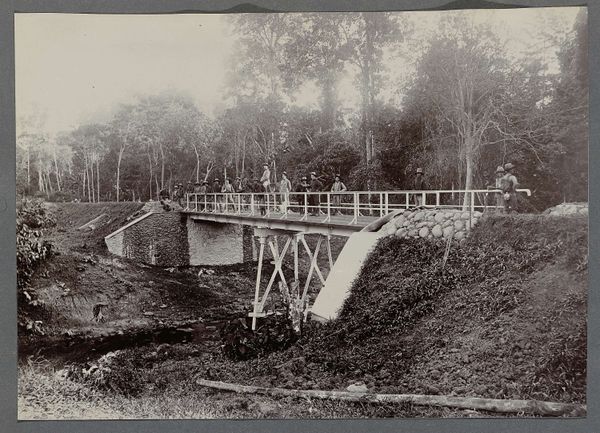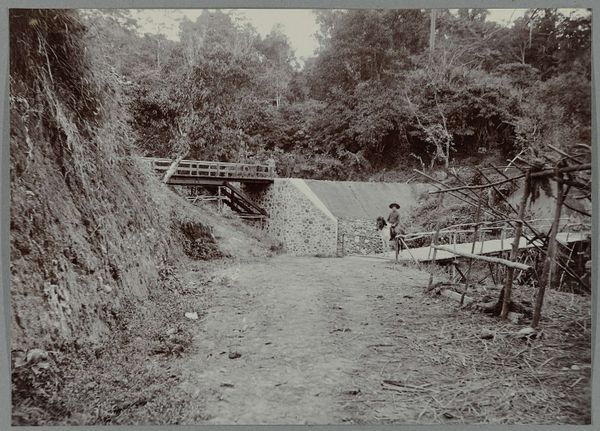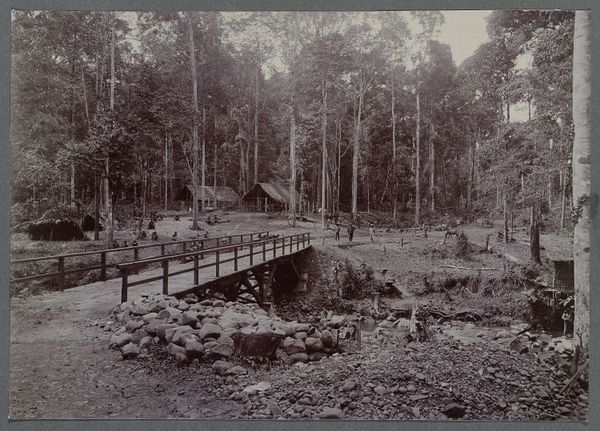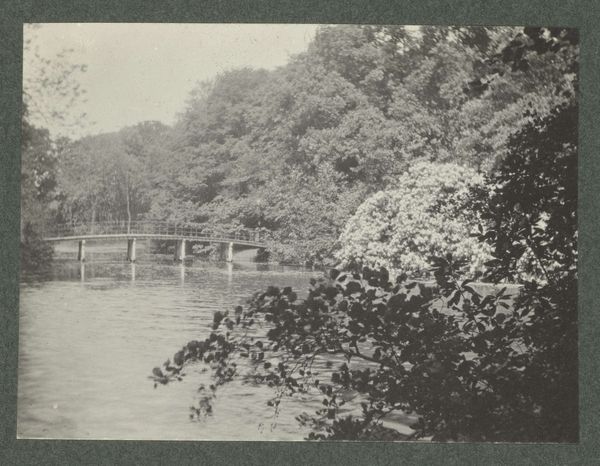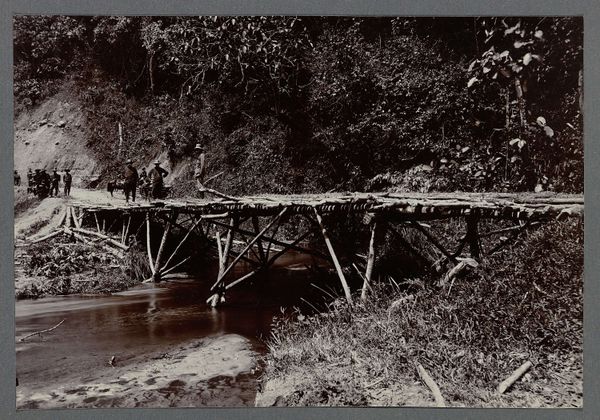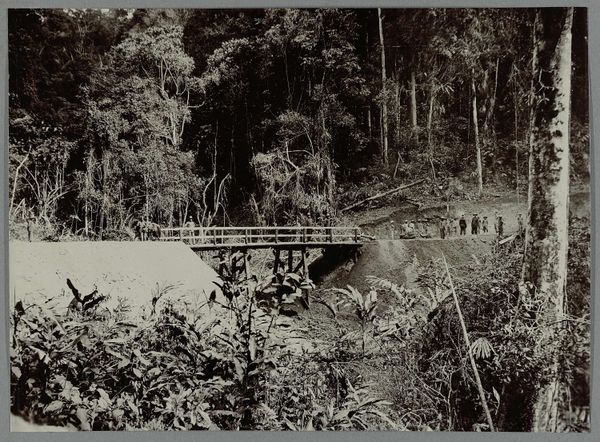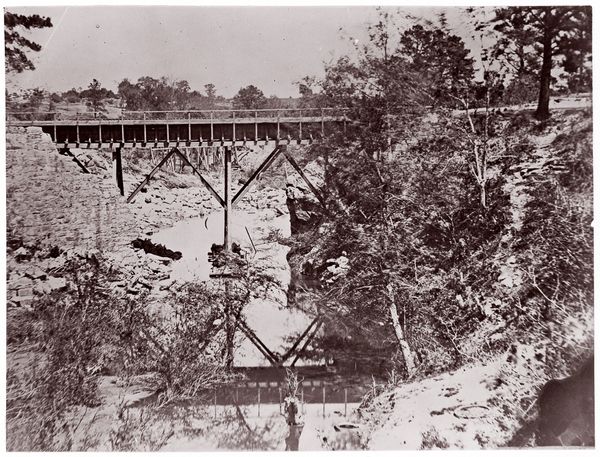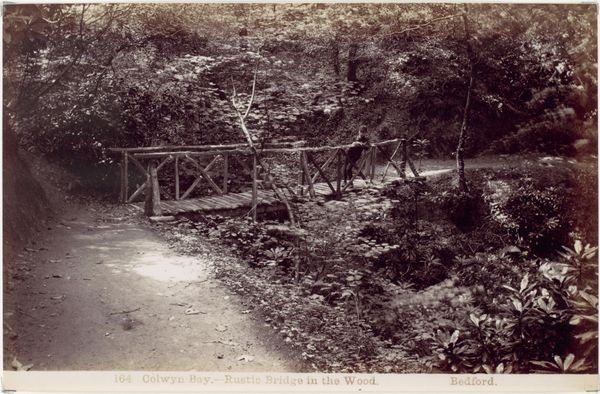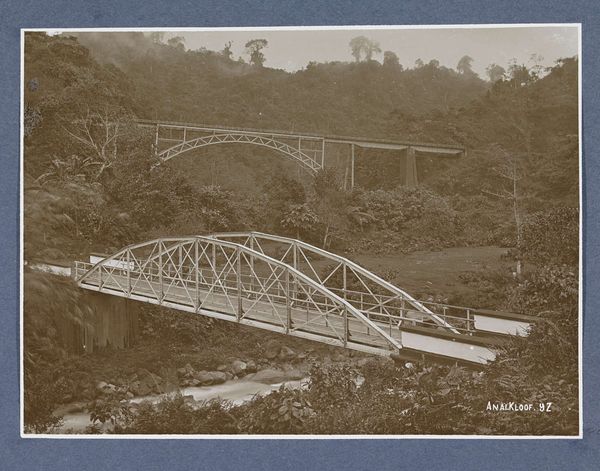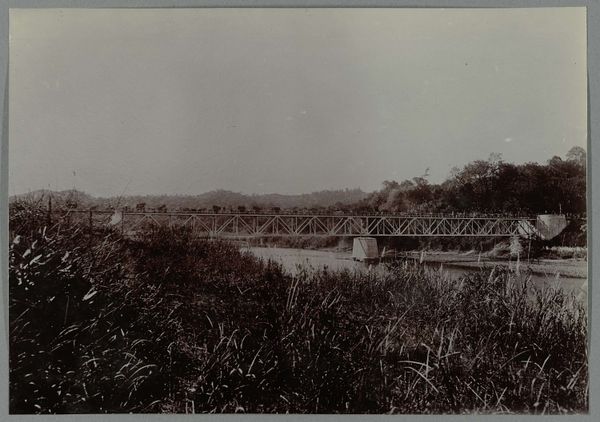
print, photography
# print
#
sculpture
#
landscape
#
photography
Dimensions: height 138 mm, width 200 mm
Copyright: Rijks Museum: Open Domain
Curator: This image, titled "Brug over de rivier Alue Teungoh," comes to us from the period of 1903 to 1913, though we have no definitive attribution for the artist. It's a striking photographic print depicting a bridge and figures, all rendered in monochromatic tones. Editor: My immediate impression is of a somewhat fragile infrastructure amidst a robust, almost overwhelming natural setting. There’s a real contrast in the image's structural elements. What strikes you first? Curator: I'm particularly interested in the figures themselves. Notice how their placement on the bridge elevates them, subtly asserting dominance over the landscape. Consider the colonial implications—the bridge, a symbol of imposed order, facilitating access and control. It also gives prominence to the figures on horseback. Editor: Absolutely. And the construction of the bridge itself! Look at the concrete abutments supporting a metal span. This image presents a collision of materials and purposes. What kind of labor went into that? Were these materials sourced locally? The very making of the bridge—the felling of trees, the quarrying of stone—speaks volumes. Curator: That leads to the socio-political reading. The landscape isn’t simply observed, it’s being actively changed. This wasn't just an engineering project, it was nation-building, expanding markets and solidifying imperial control. Think about how such structures shaped relationships between colonizers and local populations. Editor: And thinking about materials in terms of production, that light, it makes me want to ask more about photographic practices at the time. The material processes of photography themselves would impact what they would eventually show. Curator: That makes me reflect on how landscape, identity and power interlock within such a visual frame. Ultimately it allows us to see how social dynamics literally take shape, and are manifested materially. Editor: For me, it stresses that art, even landscape, isn't ever just an object for passive viewing. Thank you for enriching my view of how to critically assess such intersections.
Comments
No comments
Be the first to comment and join the conversation on the ultimate creative platform.
